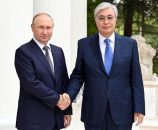Khaleej Times
M. Aftab
As the current financial year 2016 moves towards its close on June 30, the Pakistan government has promised to unveil a more pro-business budget for fy-2017.
This is visible to all at home, including political opponents of Prime Minister Nawaz Sharif and his ruling Pakistan Muslim League party. However, in the wake of the Panama Leaks scandal, opposition politicians are demanding that Sharif’s family wealth, allegedly hidden abroad in offshore companies, be exposed and that the leader be jailed. Such demands are unjustified as his party can still rule Pakistan for two more years of its five-year elected term. Sharif and his supporters, who run into millions across the country, strongly believe that he will come out of the present uproar unscathed and complete his five-year term that ends in May 2018.
Such skirmishes apart, international analysts and multilateral institutions are praising Sharif’s government and forecasting “renewed and continuing economic, business and financial growth” compared to ex-president Asif Ali Zardari’s five-year rule which ended in May 2013.
The latest to endorse Sharif’s rule and Pakistan’s economic health is the World Bank. The institution’s latest country report said: “Fast-growing home remittances and rising investments under the China Pakistan Economic Corridor [CPEC] have supported the country’s economic growth. Pakistan’s modest economic growth will continue.”
Below-target growth
The World Bank added: “However, growth remains below the 5.5 per cent target envisaged in Pakistan’s annual plan and the South Asia average of 7.5 per cent. Pakistan’s growth is expected to pick up to 4.5 per cent from 4.2 per cent.”
The report further added: “Like the rest of the region, Pakistan is benefiting from high remittances, CPEC investments and from low prices of imported oil, which have reduced the trade deficit despite a notable decline in exports and increased consumption.”Finance Minister Ishaq Dar said: “I have set a 6.2 per cent GDP growth target for fy-17 and strongly believe we can achieve it. The budget will help achieve it.” Haroon Akhtar, special adviser to the Prime Minister on taxes and revenues, said: “The budget for fy-17 will encourage people to invest in various industries and with that they will be investing in the people of Pakistan.” He was speaking to top economists, bankers and businessmen at a pre-budget seminar on the status of the economy and the federal budget-fy-2017, organised by the Centre for Policy Studies in Islamabad.Akhtar said: “This investment will enable Pakistan to build infrastructure such as highways and bridges from its own capital rather than from borrowed money.”
The gross domestic product (GDP) is up at five per cent, leaving its former range of two to three per cent. The economy, particularly industrial output, will rise further as the government is moving fast to add 10,000 megawatts of power to end energy shortages. It will add another 15,00mg by 2025. Haroon also said “the ongoing military operation to eliminate terrorism across the country has revived the economy.”
Despite a global slowdown, the Pakistan Stock Exchange last week shot up to close at 35,000 – the psychological mark and the all-time historic high – as the oil sector attracted gains. That’s a good pointer on where the is economy headed to.
Changing gears
Sharif and his cabinet last week discussed and approved the government’s ‘Growth and Budget Strategy Paper FY-2016-18’. He said: “We have decided to change gears from fiscal stabilisation to economic growth. It is time to make efforts to achieve a higher growth trajectory while consolidating our stabilisation gains.” Some of the targets set by the ‘Growth and Budget Strategy Paper FY-2016-18’ are: new power generation of 16,000 megawatts by 2018; new natural gas supply of 1,500mc; to attract new foreign private investment; GDP target of 6.2 per cent to be achieved by end of fy-17, and seven per cent by end of fy-18; focus stays on power, gas, roads and rail projects; investment-to-GDP ratio will be raised from 16.1 per cent to 19.5 per cent in fy-17 (from the current Rs4.85 trillion to Rs6.79 trillion).
The investment-to-GDP ratio will be raised further to 21.1 per cent in fy-18. The size of the economy or GDP will be raised from the current Rs30.672 trillion to Rs34.801 by fy-17 and to Rs40 trillion by fy-18.


